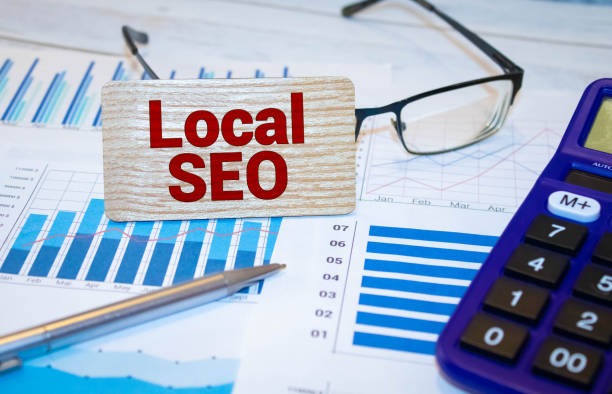In today’s hyper-competitive digital marketplace, understanding the ins and outs of local SEO pricing can make or break your small business’s online visibility. Whether you’re a local bakery, a boutique law firm, or a neighborhood yoga studio, optimizing for “near me” searches ensures that customers find you when they’re ready to buy. But with so many variables—project scope, competition level, service provider expertise—how do you determine the right investment in local SEO? This comprehensive guide will walk you through everything you need to know about local SEO pricing: what factors drive costs, common pricing models, typical investment ranges, how to measure ROI, and tips to choose the right partner for your budget.
1. Why Invest in Local SEO?
- Increased Foot Traffic: Nearly half of all Google searches have local intent, and 76% of people who search on their smartphones for something nearby visit a related business within a day.
- Higher Conversion Rates: Local searches tend to convert at a rate up to five times higher than non-local searches because they signal purchase intent.
- Competitive Advantage: Many small businesses still underestimate the power of local search optimization, giving savvy competitors an edge.
- Cost-Effective Marketing: Compared to broad-reaching paid campaigns, local SEO offers sustainable visibility without the ongoing ad spend.
Investing in local SEO helps you capture qualified leads from people actively looking for your products or services in your service area. But before you start signing contracts, let’s break down what determines your eventual pricing.
2. Key Factors That Influence Local SEO Pricing
The cost of local SEO services isn’t one-size-fits-all. Here are the primary variables that agencies and consultants consider when setting their rates:
2.1. Geographic Scope
- Single Location vs. Multi-Location: Optimizing one storefront is simpler—and cheaper—than managing SEO for ten locations scattered across different cities or regions.
2.2. Competition Level
- Industry Saturation: Highly competitive industries (e.g., legal, dental, home services) require more aggressive strategies—like link-building and content creation—to outrank established players.
- Search Volume & Demand: High-demand service areas may require heavier investment.
2.3. Current Website Health
- Technical Foundation: A site with slow load times, poor mobile responsiveness, or complicated navigation needs more technical fixes before on-page or off-page optimization can even begin.
- Existing SEO Profile: A brand-new website typically costs more to set up than one with a history of good performance.
2.4. Desired Services
- On-Page SEO: Includes keyword research, meta tag optimization, schema markup, and localized content creation.
- Off-Page SEO: Citations, local directory submissions, link-building, and neighborhood-specific PR efforts.
- Google Business Profile Management: Regular posts, photo updates, review management, and Q&A responses.
- Reputation Management: Encouraging positive reviews, responding to feedback, and mitigating negative comments.
- Reporting & Analytics: Frequency and depth of performance reports—basic vs. custom dashboards.
2.5. Agency Expertise & Resources
- Freelancer vs. Boutique Agency vs. Large Agency: Freelancers often charge less but may lack full-service capabilities; established agencies command higher rates due to brand reputation and in-house talent; niche local SEO specialists fall somewhere in between.
3. Common Local SEO Pricing Models
Agencies and consultants typically structure local SEO fees in one of the following ways:
| Pricing Model | Description | Pros | Cons |
| Monthly Retainer | Fixed monthly fee covering an agreed-upon scope of work (e.g., $1,000–$5,000+/mo). | Predictable budgeting, continuous care | Can be costly for small budgets |
| Project-Based Fee | One-time cost for a specific project (e.g., site audit, initial setup). | Clear deliverables, defined timeline | No ongoing support if issues arise later |
| Hourly Rate | Pay-as-you-go based on hours worked, typically $75–$250/hour. | Flexible, only pay for actual work | Harder to predict total costs |
| Performance-Based | Fees tied to specific outcomes (e.g., first-page rankings, lead generation). | Low risk, results-driven | Agencies may avoid riskier clients |
| Package Pricing | Tiered service bundles (Basic, Standard, Premium) with set features and fees. | Easy to compare options | May include unnecessary services |
4. Typical Price Ranges
While every provider’s rates vary, here are ballpark figures to guide your budgeting:
- Freelancer / Solo Consultant
- Hourly: $75–$100
- Project Setup: $800–$2,500
- Monthly Retainer: $500–$1,500
- Hourly: $75–$100
- Boutique Local SEO Agency
- Hourly: $100–$150
- Project Setup: $2,000–$5,000
- Monthly Retainer: $1,000–$3,000
- Hourly: $100–$150
- Mid-Sized / Full-Service Agency
- Hourly: $150–$250+
- Project Setup: $5,000+
- Monthly Retainer: $3,000–$10,000+
- Hourly: $150–$250+
- Performance-Based
- Setup: $1,000–$3,000
- Success Fee: 10%–20% of revenue generated or per-lead fee ($50–$200/lead)
- Setup: $1,000–$3,000
These ranges can shift substantially based on location (costs are higher in major metros) and the provider’s track record.
5. What to Expect in Your Local SEO Package
Most local SEO packages will include a combination of the following deliverables over the first 3–6 months:
- Comprehensive Audit
- Website technical health (speed, mobile-friendliness)
- On-page optimization (titles, headings, content gaps)
- Backlink profile and competitor analysis
- Website technical health (speed, mobile-friendliness)
- Google Business Profile Optimization
- Claiming and verifying your listing
- Detailed business description, categories, and attributes
- Regular posts and photos
- Claiming and verifying your listing
- Citation Building & Management
- Consistent Name, Address, Phone (NAP) across 20–50 directories
- Cleanup of duplicate or outdated listings
- Consistent Name, Address, Phone (NAP) across 20–50 directories
- Localized Content Marketing
- Blog posts, service pages, or landing pages optimized for neighborhood keywords
- FAQs, local event coverage, or neighborhood spotlights
- Blog posts, service pages, or landing pages optimized for neighborhood keywords
- Review Generation & Management
- Email or SMS campaigns to encourage satisfied customers to leave reviews
- Monitoring and responding to new reviews
- Email or SMS campaigns to encourage satisfied customers to leave reviews
- Link Acquisition
- Local sponsorships, partnerships, or community events
- Guest posts on local blogs and regional publications
- Local sponsorships, partnerships, or community events
- Monthly Reporting & Strategy Calls
- Rankings, traffic, leads, and review metrics
- Adjustments based on performance and seasonality
- Rankings, traffic, leads, and review metrics
6. Measuring ROI: What Metrics Matter?
To ensure your spend on local SEO delivers value, track these key performance indicators:
- Visibility & Rankings: Positions for target “near me” and service-area keywords.
- Organic Traffic Growth: Sessions and users from local searches.
- Leads & Conversions: Calls, contact form submissions, appointment bookings.
- Google Business Profile Insights: Number of views, clicks, calls, direction requests.
- Review Volume & Sentiment: Quantity and average rating over time.
- Revenue Attribution: Track sales or revenue directly tied to organic/local channels.
A solid analytics setup (e.g., Google Analytics goals, call-tracking software) is essential to link costs with concrete returns. Many agencies include a performance dashboard so you can see real-time progress against these metrics.
7. Tips for Choosing the Right Local SEO Partner
When evaluating proposals, keep these best practices in mind:
- Ask for Case Studies & References
- Look for success stories in your industry and similar-sized markets.
- Look for success stories in your industry and similar-sized markets.
- Clarify Deliverables & Communication
- Ensure you know exactly what’s included, how often you’ll hear from them, and who your main point of contact will be.
- Ensure you know exactly what’s included, how often you’ll hear from them, and who your main point of contact will be.
- Beware of “Quick-Fix” Promises
- Be cautious of guarantees for #1 rankings overnight—true local SEO is a sustainable, long-term strategy.
- Be cautious of guarantees for #1 rankings overnight—true local SEO is a sustainable, long-term strategy.
- Understand Reporting Tools
- Confirm whether you’ll have direct access to dashboards or only PDF reports.
- Confirm whether you’ll have direct access to dashboards or only PDF reports.
- Evaluate Cultural Fit
- A partner who understands your community and brand voice will deliver more authentic local content.
- A partner who understands your community and brand voice will deliver more authentic local content.
- Consider Contract Flexibility
- Look for month-to-month plans or clearly defined terms instead of long, locked-in contracts.
- Look for month-to-month plans or clearly defined terms instead of long, locked-in contracts.
8. How to Optimize Your Local SEO Budget
Even with a modest budget, you can maximize impact by focusing on high-leverage tactics:
- Prioritize Technical Health: A fast, mobile-friendly site lays the groundwork for all other efforts.
- Optimize Your Google Business Profile: Free to claim and maintain, this is often the single most impactful local asset.
- Leverage Customer Reviews: Encourage and respond to reviews—no cost besides your time.
- Create Hyper-Local Content: Write blog posts about events, landmarks, and news in your community.
- DIY Citation Management: Use cost-effective tools or manual submissions to maintain NAP consistency.
By combining in-house efforts with targeted agency support, you can keep overall local SEO pricing down while still gaining traction.
9. Common Pitfalls to Avoid
- Inconsistent NAP Information: Misaligned listings across directories confuse search engines and customers.
- Ignoring Mobile Users: With over 60% of local searches on mobile devices, a poor mobile experience kills conversions.
- Overlooking Analytics: Without tracking, you won’t know what’s working—or what needs adjustment.
- Neglecting Reviews: Failing to solicit and respond to feedback both hurts rankings and repels potential customers.
- Relying Solely on Organic: Complement SEO with local paid ads or social media to capture multiple touchpoints.
10. Case Study: A Neighborhood Café’s Journey
Background: Cozy Corner Café, a small coffee shop in a mid-sized city, saw stagnant foot traffic despite a loyal local following.
Approach:
- Website Refresh: Improved page speed by 40%, enhanced mobile layout, added schema for menu items.
- GBP Optimization: Uploaded high-quality photos, updated hours, created weekly “specials” posts.
- Local Content: Launched a blog series on “Top 5 Hidden Gems Near [City]” and “How to Brew the Perfect Espresso at Home.”
- Review Campaign: Placed QR-code table tents asking customers to leave feedback; responded to every review.
Results (6 Months):
- 85% increase in Google Business Profile discovery views
- 60% rise in website visits from local search
- 120 new 5-star reviews, boosting average rating from 4.2 to 4.8
- 30% uplift in daily foot traffic
- 20% revenue growth directly attributed to local search initiatives
11. Final Thoughts
Understanding local SEO pricing isn’t just about finding the cheapest option—it’s about aligning your investment with your business goals, competition level, and desired outcomes. By breaking down costs, knowing what to expect in a service package, and choosing a partner who communicates clearly, you can transform “just a salary” marketing expense into a reliable, revenue-driving channel. Start by auditing your current status, set realistic goals, and allocate budget to the tactics that deliver the highest ROI. With the right strategy, your business will dominate local search results, bring in more qualified leads, and become a community staple for years to come.





Leave a Reply